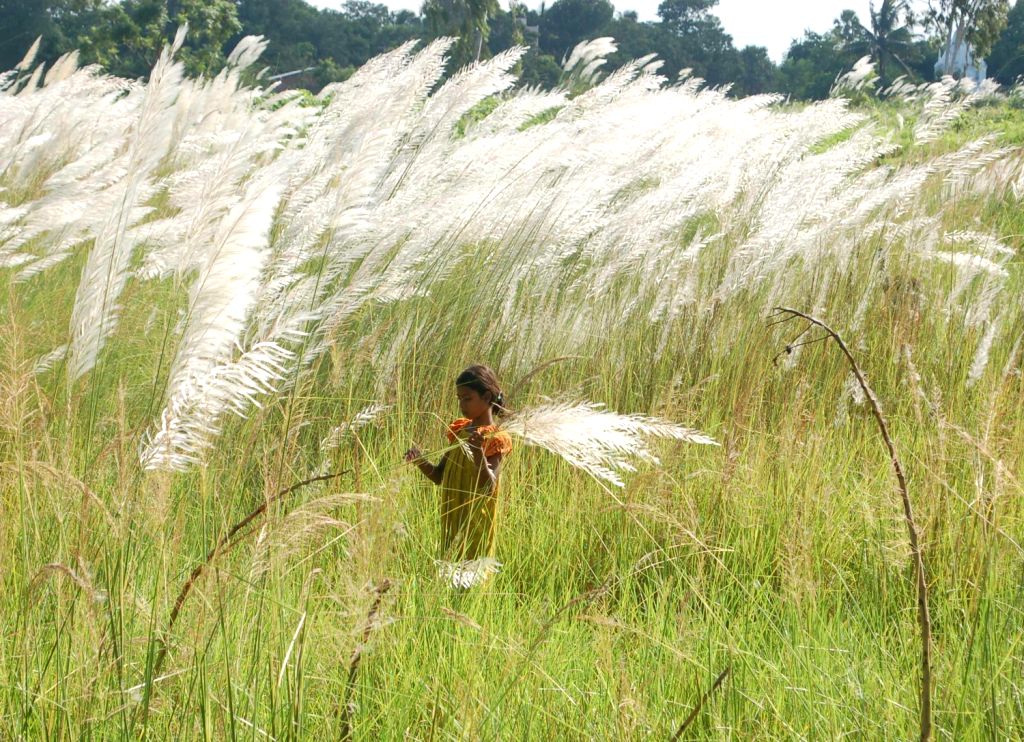My acquaintance with kash phool (Kans Grass) deepened when as an adolescent I read the novel Pather Panchali (first published in 1929) by Bibhutibhusan Bandyopadhyay. His other novel, Aranyak happens to be my all-time favourite mainly because of its evocative depiction of the wonders of nature in places like Lobtulia and its surroundings which sadly do not exist anymore. I still vividly recall the scene where Durga and Apu run with great excitement to see a train passing through their village; the majesty and marvel of the steam engine hauling the train, smoke drifting out from it and curling back in the air, glimpsed through the banks of flowering kash phool grown wild all along the track. Of course the image of this spectacle got further imprinted in the subconscious when I saw the film of the same name (first released in 1955) by the great Satyajit Ray.
In October last year just before Durga Puja, after spending some time at Sri Sri Matri Mandir, we were on our way out of Joyrambati. One of our relations accompanying us was talking about the preponderance of kash phool near the Jangal Kanya Setu (Bridge) in Jhargram where she had recently visited. We too were hoping to sight it in the villages we were passing through, so that we could feast upon its freshness and soak up its purity and elegance. Some of it did appear along the way, but they looked rickety and stunted, shorn of the ivory colour and looking mostly brownish. The auto driver told us about the recent unseasonal heavy rain in the area that nipped the growth of this dreamy and seductive flower.
When we reached the ticket counter at Goghat railway station, I grew increasingly pensive for not being able to spot a single healthy stirring stick of the flower known as the harbinger of autumn. But you see, once in a while, just as some extraordinary dreams appear in my sleep—for instance a couple of wondrous full moons in the sky or speaking face to face to an author no longer alive (Somerset Maugham)—in real life too I occasionally get to behold things after my heart by sheer chance.
We then boarded the Howrah bound local train; got a window side seat on the left, put the kitbag on the overhead rack. Just as I sat down, my eyes were drawn to the edge of the opposite platform which lay there in disuse. At first I could not believe my eyes. From where I sat, I could see a clump of silky white blossoms stretching some 15/20 meters in either direction along the track gleaming with a satiny sheen!
As the train drew out of the station, I got, for good measure, an eyeful of the pretty little groves of kash phool here and there all the way from Goghat to the next station, Arambagh. They were fluttering and dancing in the breeze.
